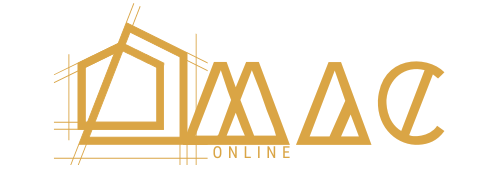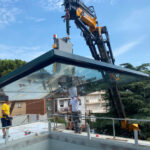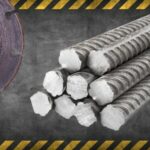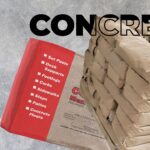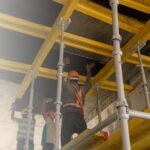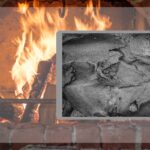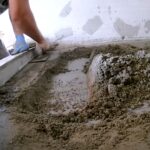In the realm of masonry, certain terms are tossed around that, unless you’re familiar with the trade, may seem like a foreign language. Repointing and tuck pointing are two such terms that often confuse homeowners and DIY enthusiasts alike.
Today, we’ll delve into these concepts, demystifying the jargon and providing you with valuable insights into these critical masonry maintenance practices.
Masonry in a Nutshell
Before we jump into the nitty-gritty, let’s first briefly touch upon the concept of masonry. Masonry refers to the craft of constructing or repairing buildings, walls, or other structures with hard materials such as bricks, stones, or concrete blocks.
The “glue” that holds these units together is known as mortar, a paste made from water, sand, and binding agents like cement or lime. Over time, this mortar can deteriorate, leading to the need for repointing or tuck pointing.
Repointing vs. Tuck Pointing: A Brief Overview
Repointing and tuck pointing are both remedial works performed on masonry structures to repair weathered and decayed mortar joints. But what sets these two apart?
Repointing
Repointing is the process of renewing the external and visible parts of mortar joints in a masonry construction. Over time, weather and decay cause voids in the joints between masonry units, allowing the undesirable entrance of water. Water entering through these voids can cause significant damage through frost weathering and from salt dissolution and deposition.
The repointing process involves removing the old, damaged mortar and replacing it with new mortar. This helps maintain the health and structural integrity of the masonry. It also improves the visual appeal of the structure, as weathered and decayed mortar can be unsightly.
Tuck Pointing
Tuck pointing, on the other hand, is a slightly more complex and decorative technique. It originated in the late 18th century as a way of making cheaper bricks look like a more expensive rubbed brick. The process involves filling in the mortar joints with a flush mortar of matching color to the bricks, and then a thin line (a tuck) of white, lime-based putty is applied.
In other words, while both repointing and tuck pointing aim to prolong the life of a masonry structure and improve its aesthetics, tuck pointing involves an additional step that gives the illusion of fine mortar joints.
The Process: Repointing vs. Tuck Pointing
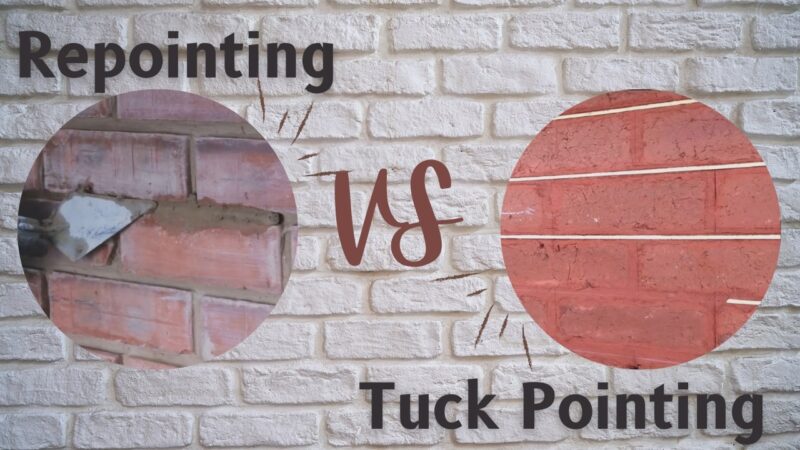
Let’s now dive a bit deeper and discuss how each process is carried out.
The Repointing Process
Repointing involves several distinct steps:
- Inspection: First, a thorough inspection of the masonry is performed to identify areas that require work.
- Removal of old mortar: The deteriorated mortar is then carefully removed from the joints using a grinder or chisel.
- Preparation of the joint: The joint is cleaned and dampened to ensure good bonding with the new mortar.
- Application of new mortar: New mortar is applied to the joints using a pointing trowel.
- Finishing: Once the mortar has semi-dried, the joints are tooled to match the existing joints. The excess mortar is removed, and the area is cleaned.
The Tuck Pointing Process
Tuck pointing follows a similar process to repointing but includes additional steps:
- Inspection and removal of old mortar: These steps are identical to the repointing process.
- Preparation of the joint: Like repointing, the joint is cleaned and dampened.
- Filling in with mortar: A mortar of matching color to the bricks is filled into the joints, flush with the brickwork. This is left to dry slightly but not completely.
- Tuck (line) application: A thin line of white, lime-based putty is then applied in the center of the mortar joint, creating the appearance of a fine, well-crafted joint. This is the defining step of tuck pointing that differentiates it from reporting.
- Finishing: Like repointing, once the putty has semi-dried, any excess is removed, and the area is cleaned.
Which One is Right for Your Masonry?
Choosing between repointing and tuck pointing often depends on your specific circumstances. Repointing is usually sufficient for most homeowners who simply want to maintain their masonry and prevent further decay. It’s a straightforward process and typically costs less than tuck pointing.
On the other hand, tuck pointing is often preferred for older or historical buildings where aesthetics play a crucial role. It can help to maintain the original appearance of the brickwork while still providing the necessary maintenance. However, it’s a more intricate process and hence generally costs more than repointing.
Importance of Hiring a Professional
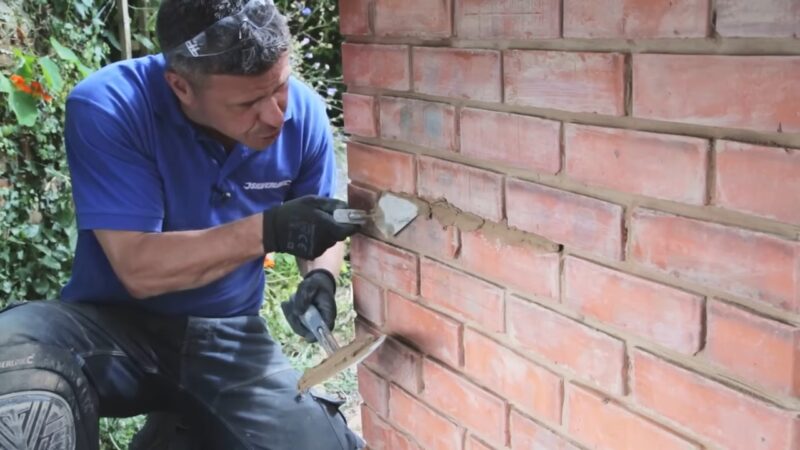
While some avid DIYers might be tempted to tackle repointing or tuck pointing on their own, these processes are best left to professionals. Incorrectly mixed mortar or poorly filled joints can lead to further damage and may result in even more expensive repairs down the line.
Masonry professionals have the right tools, knowledge, and experience to ensure the job is done correctly and safely.
The Impact of Weather and Time on Masonry
As we’ve established, masonry structures require maintenance over time. But why does this deterioration occur? The answer lies in the effects of weathering and time.
When we discuss weathering, we’re referring to the process of wear and tear on materials due to environmental conditions. In masonry, this can take the form of rain, snow, wind, and even sun.
Precipitation, for example, can seep into the tiny pores in the mortar, causing it to weaken over time. Similarly, the freeze-thaw cycle—where water seeps into the mortar, freezes, expands, and then thaws—can cause significant damage to the mortar joints.
Furthermore, over time, the binding materials in the mortar can break down due to a process called carbonation. This results in the mortar losing its adhesive properties and becoming sandy and crumbly, making it less effective at binding the bricks or stones together.
All these factors contribute to the necessity for repointing or tuck pointing to keep the masonry structure solid, watertight, and visually appealing.
The Role of Mortar in Masonry
The mortar in a masonry structure is more than just a binding agent for the bricks or stones. Its properties and composition can significantly impact the durability and functionality of the structure.
For example, the hardness and permeability of the mortar should be carefully considered. If the mortar is too hard compared to the bricks, it can prevent the natural movement of the structure and lead to cracks. On the other hand, if the mortar is too permeable, it can allow excessive moisture to penetrate the structure, leading to dampness problems.
A good quality mortar will strike a balance, being hard enough to bind the bricks effectively, but also permeable enough to allow moisture to escape.
When repointing or tuck pointing, it’s crucial to match the new mortar to the existing one in terms of hardness, permeability, color, and texture. Failure to do this can lead to visual discrepancies and structural issues.
The Historical Importance of Tuck Pointing
While tuck pointing may seem like a purely aesthetic technique today, it actually has historical importance. In the late 18th and early 19th centuries, brick manufacturing techniques were not as advanced as they are today. This often resulted in bricks of varying sizes and shapes. Tuck pointing was used to create the illusion of perfectly shaped bricks and fine, uniform joints.
Interestingly, tuck pointing was also used as a status symbol. Buildings with fine, rubbed bricks were seen as high status, and tuck pointing allowed people to replicate this look with cheaper, less perfectly formed bricks.
Today, tuck pointing is often used in historical restoration projects to maintain the authentic appearance of old brickwork. It’s a testament to the craft of the masons of the past and a nod to the history of the building.
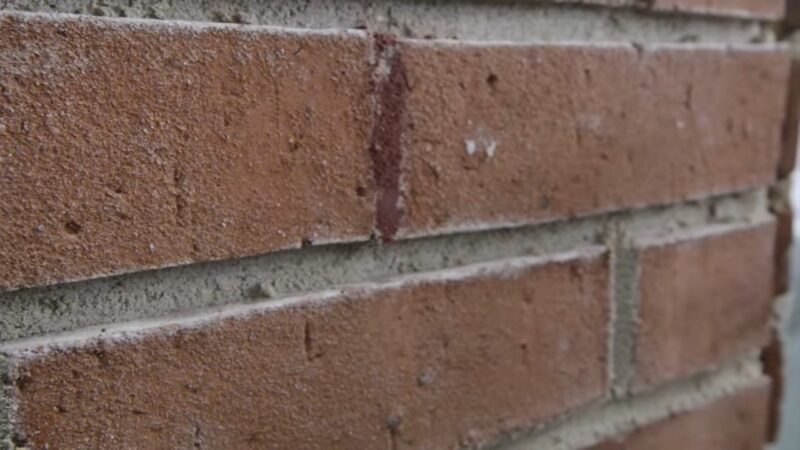
Final Words
Repointing and tuck pointing are essential practices in masonry that help maintain the structural integrity and visual appeal of brick and stone constructions. While they share similar goals, they differ in their processes and outcomes.
Repointing involves replacing deteriorated mortar with new one, while tuck pointing, a more decorative technique, involves the application of a thin line of putty to give the illusion of fine joints.
The choice between the two will depend on your specific needs and the type of structure you have. However, regardless of which process you choose, it’s crucial to hire a professional to ensure the work is done correctly and to avoid any potential further damage.
Remember, your home is your castle. Ensuring its upkeep, especially when it comes to masonry work, not only enhances its beauty but also maintains its structural integrity, allowing it to stand strong for generations to come.
